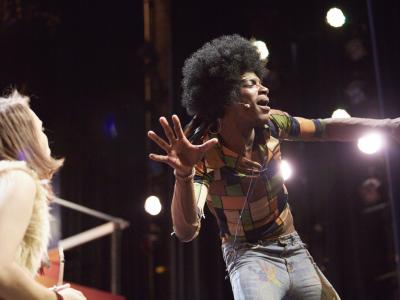What does an Artistic Director do?
Artistic directors take on the challenge of developing a recognizable artistic identity or brand for a nonprofit arts organization, such as a symphony orchestra, opera company, dance company, or theater company. Designing the company's performance season is a pivotal part of the job, and involves choosing themes to explore; selecting original works to develop; commissioning writers, composers, and/or choreographers to create new work; and hiring directors or conductors to bring the performance pieces to life. In addition, artistic directors are likely to produce, direct, conduct, or choreograph work themselves.
Artistic directors are eminent creatives within their field, possessing a wealth of knowledge, experience, and professional connections to draw upon in leading their company.
While their chief duty is to manage and direct the performance wing of the organization, artistic directors also weigh in on decisions made by the marketing, fundraising, and business departments—for example, arguing for or against branding changes, approving development events such as galas and VIP performances, or creating reduced-price ticket programs to bring in younger audiences. While some artistic directors choose to focus entirely on the creative side of the job, leaving non-artistic tasks to a general manager or managing director, most are deeply involved in the administration and management of the company as pertaining to its future success.
In the orchestra world, music director is often used as an equivalent title to artistic director.
At a Glance
Artistic directors are eminent creatives within their fields, possessing a wealth of knowledge, experience, and professional connections to draw upon in leading their company. In terms of education, a Master of Fine Arts degree isn't required, but is often preferred. Artistic directors are usually current or former directors, producers, conductors, music directors, bandleaders, choreographers, or dancers, depending on whether they belong to a theatrical, musical, or dance organization. For most, becoming an artistic director is the culmination of their career in the arts; progressing from there usually means filling a similar role at a larger or more prestigious organization.
Artistic directors are employed by theater companies, dance companies, opera companies, symphony orchestras, and museums. They may be promoted from within the organization after many years of service, or hired externally after a search among highly qualified individuals. Artistic directors answer to the company's board of directors.
- Management of an arts organization
- Performance, direction, and design skills
- Hiring and personnel management
- Multitasking
- Strategic vision
- Written and verbal communication
- Public speaking
- Strong professional network
- Leadership
Artistic directors are leaders and spokespeople, which means they need to have excellent public speaking, communication, and delegation skills. Multitasking without losing focus is a priceless skill that serves artistic directors well, given the varied nature of the position. Negotiation skills and the ability to compromise are equally key.
As executives, artistic directors answer directly to their company's board of directors. This means that at times, artistic directors must be ready to persuasively and articulately represent the interests of the performance wing of the organization, as well as their own vision for the company.
The work life of an artistic director varies based on the size of the arts organization in question. Artistic directors of smaller organizations are likely to also be the company's CEO and principal director, conductor, or choreographer, leading to a packed schedule that includes both administrative and artistic duties. Artistic directors of large and established arts organizations are likely to break up desk work with frequent travel and meetings in order to maintain or build relationships with vital donors, as well as broker new artistic collaborations. They may also participate in conferences, conventions, and other industry events (such as the Tonys). The hours are long and the work is hard, but that's not likely to deter anyone who's made it this far in their artistic career.



